19 Essential Iceland Travel Tips for First-Time Visitors

This site contains affiliate links, which means that we may earn a small commission, at no cost to you, for qualifying purchases. It supports the work that goes into keeping this content free. Thanks for reading! More info: Privacy Policy.
Planning a trip to Iceland and not sure what to expect? This guide with our top Iceland travel tips will help you prepare.
All advice here is based on our own experience traveling in Iceland many times – in summer and winter, as a couple, with kids, solo, on a Ring Road road trip in both a regular car and a 4WD, and even on a winter group tour.
Do I need a 4WD? Should I book activities in advance? What do I wear? What kind of shoes should I bring? Do I need cash? How about a travel adapter? How realistic is it to drive the Ring Road in winter?…
In this article, you’ll find answers to these and other common questions and our practical tips to help you plan your trip and make the most of your time in Iceland.
SEE ALSO: Iceland Travel Guide

Here are our top tips for visiting Iceland:
1. Book in Advance
This is one of my top travel tips for anyone visiting Iceland. You really need to book everything for your Iceland trip well in advance!
From flights to rental cars and from accommodation to tours – make sure that you reserve everything well upfront. The longer you wait, the less choice you have and the more you’ll pay.
The best price/quality hotels are the first ones to get fully booked, the best deals for car hire cannot be found upon arrival at the airport (in fact, there might not be any cars left at all – it happens all the time), and the best tours sell out days and sometimes even weeks in advance. And yes, even tickets to geothermal pools like the Blue Lagoon or Sky Lagoon have to be booked in advance.
PRO TIP: If you want your Iceland trip to be stress-free and more affordable, do yourself a favor and book as much as you can upfront.
LEARN MORE:
Where to Stay in Iceland
Where to Stay in Reykjavik
Best Tours in Iceland
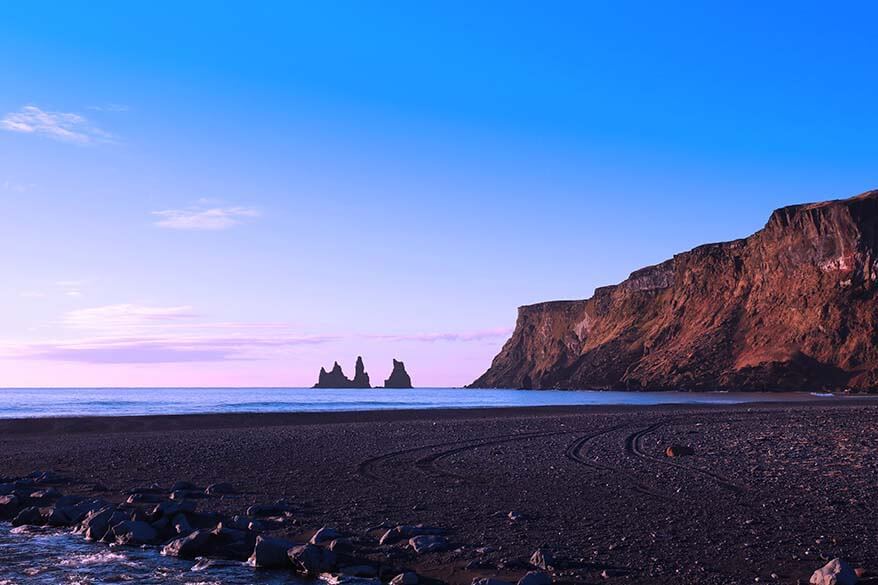
2. Get an eSIM to Avoid High Roaming Charges
Mobile network coverage in Iceland is excellent. Even in remote areas and the highlands, I had 4G almost everywhere and could make video calls with my kids from the middle of nowhere. Most hotels and restaurants also offer free high-speed Wi-Fi.
Good to know: If you have a SIM from an EU country, you won’t pay roaming fees in Iceland. So you can just use your phone as usual.
For visitors from the USA or other non-EU countries, an eSIM is the easiest way to stay connected without worrying about high roaming costs. You can set them up before you even leave home, avoid swapping SIM cards, and skip the hassle of looking for a local solution.
PRO TIP: I personally use eSimFox for my trips and highly recommend it. Setup is simple, you can activate it before leaving home, and I have never experienced any issues.
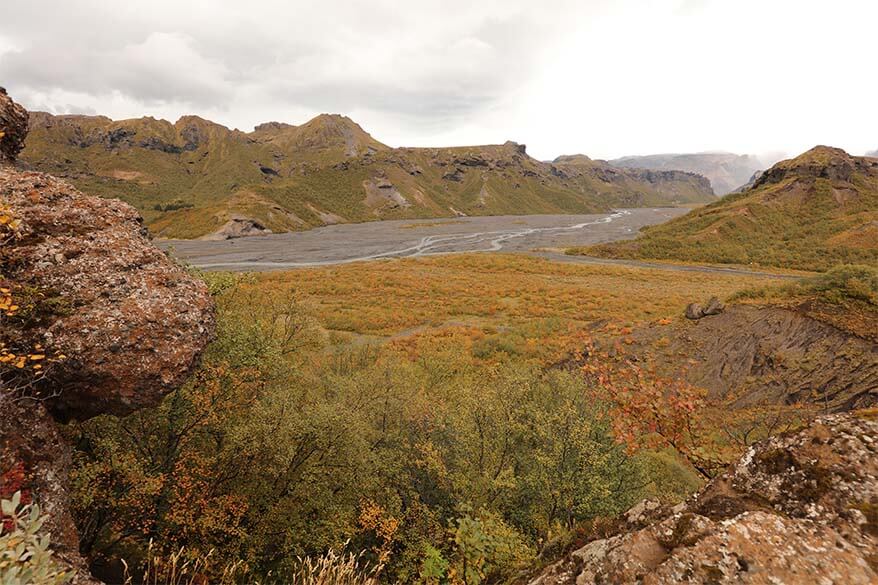
3. Don’t Worry About Cash & Tipping
You don’t need cash in Iceland. Card and smartphone payments are accepted everywhere, even in remote areas and most public bathrooms. Iceland uses Icelandic króna, and you generally cannot pay in euros or US dollars. If you want to carry cash “just in case,” 50–80 USD worth is more than enough for small exceptions.
All major credit cards work, with VISA and Mastercard being the most widely accepted. Amex is limited, and Diner’s Club rarely works. Make sure your card has a chip and a 4-digit PIN, which you’ll need for most payments, including restaurants and petrol stations. Cards without a PIN often work with a swipe, except at unmanned petrol stations – if needed, you can get a prepaid fuel card at a big chain like N1.
Good to know: Tipping isn’t customary in Iceland, and it’s generally not expected. Restaurant bills already include service, so there’s no need to add extra. Some travelers like to tip tour guides. While it’s always appreciated, it’s far from mandatory. If you do want to leave a tip, it’s a good idea to carry a little cash – you can just use dollars or euros.

4. Know How Much to Budget for Your Trip
Iceland isn’t exactly cheap, but most costs are comparable to other Scandinavian countries or Switzerland. And when you compare it to cities like New York or London, it’s not nearly as expensive as you might think.
Furthermore, many of Iceland’s best attractions are free to enjoy. Waterfalls, glaciers, geysers, and national parks all have no entrance fees, so you can experience the country’s incredible natural beauty without spending a dime.
Tap water in Iceland is not only free, but it’s also delicious. Pack a reusable water bottle for day trips and fill it up along the way. There’s no need to buy bottled water, and most restaurants will serve tap water for free, which is a simple way to save money.
The biggest expenses are accommodation, dining out, and organized activities. The good thing is that you can easily check prices online and get a good idea of how much your trip will cost in advance. Keep in mind that booking ahead can save you a significant amount, especially for car rental, hotels, and flights.
TIP: Check out our detailed guide below for a full breakdown and practical advice on planning your spending.
LEARN MORE: How expensive is Iceland + Budget Tips
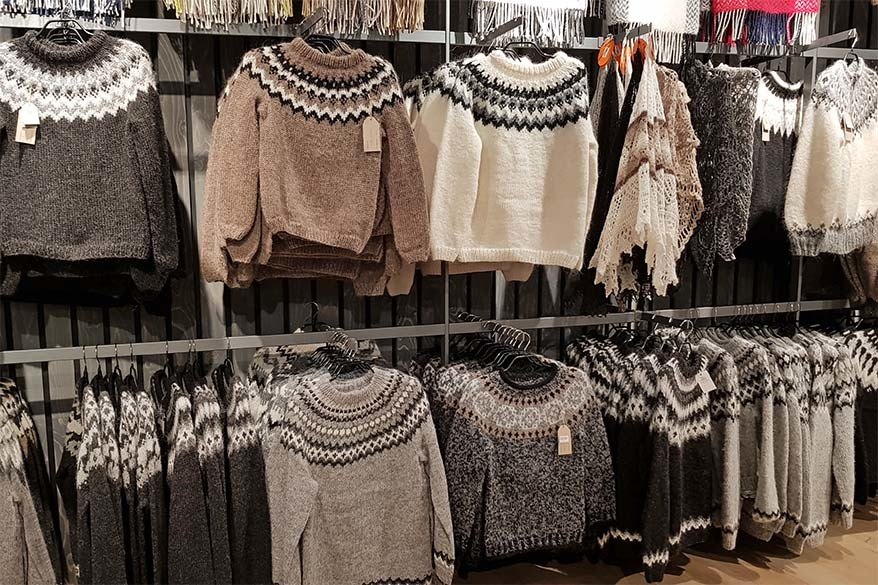
5. Be Prepared for Ever-Changing Weather
People often ask what kind of weather to expect in Iceland, but it’s impossible to predict. And there is no point in worrying about it weeks or even days in advance – it will change anyway.
Yes, winter is colder than summer, but beyond that, conditions can change multiple times in a day. Icelandic weather can switch from winter to summer in minutes: sunshine can quickly turn into a torrential downpour, followed by strong winds or thick mist.
Good to know: Average temperatures in Reykjavík range from around 0°C (31°F) in January to 13°C (55°F) in July, but wind and rain often have a bigger impact than temperature alone.
TIP: For the most reliable weather information, I use yr.no – it’s one of the most accurate, just make sure you are looking for a specific location you’ll be visiting that day.
No matter when you visit Iceland – in summer, in winter, or any time in between – you ALWAYS have to be prepared for all types of weather. Read on for our tips on what to wear!
READ ALSO: When to Visit Iceland: Summer vs Winter
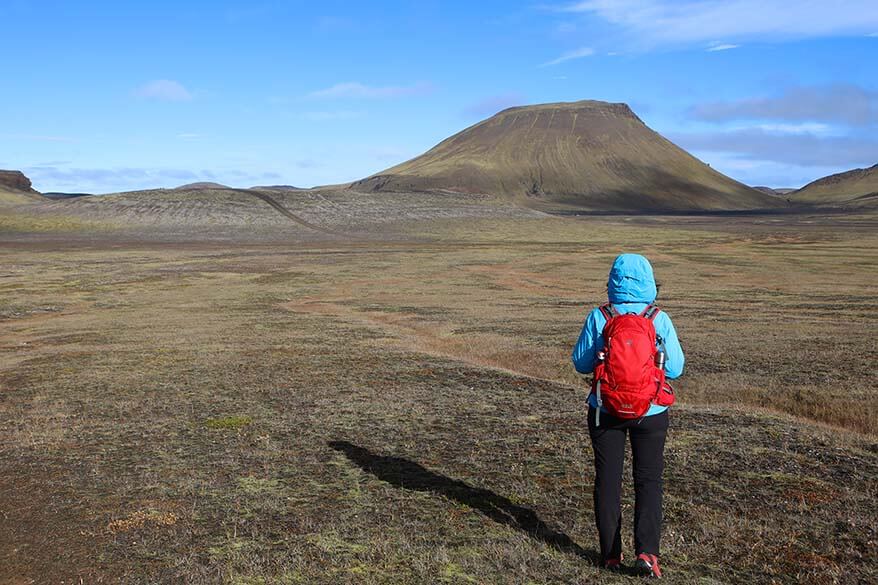
6. Dress in Layers and Wear a Waterproof Outer Layer
In Iceland, layering is key. You’ll want casual, comfortable clothes for sightseeing and some smarter options if you plan to go out. And don’t forget a swimsuit!
No matter the season, always have a waterproof outer layer ready. Good waterproof boots, rain pants, a waterproof jacket, a buff, gloves, and a warm hat will make a big difference when the weather turns quickly.
We’ve put together packing tips for every season: summer (mid-May to mid-September) and winter (October to mid-May) – see the links below. Bookmark these guides or download the packing lists to make sure you have everything you need for your trip.
LEARN MORE: What to Wear in Iceland in Summer & What to Wear in Iceland in Winter
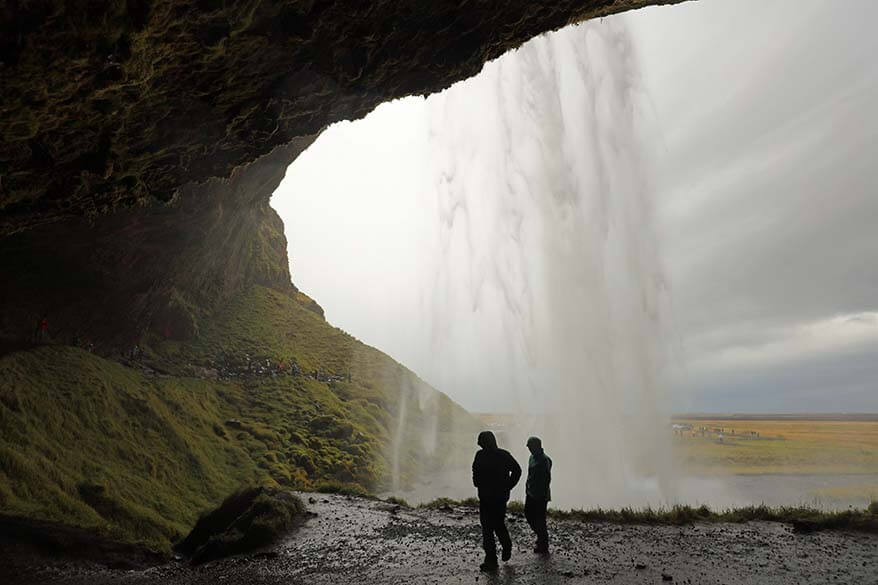
7. Pack Waterproof Shoes
Good, sturdy waterproof shoes are essential to fully enjoy Iceland. In summer, I recommend waterproof hiking boots, and in winter, warm, waterproof boots with a solid grip.
I always pack these Lowa hiking boots when visiting Iceland in summer, and these waterproof UGG winter boots in winter.
Once, I brought only water-resistant hiking boots and quickly learned that they weren’t enough. Waterproof shoes are a must in Iceland, no matter the season!
LEARN MORE: Best Winter Boots for Travel
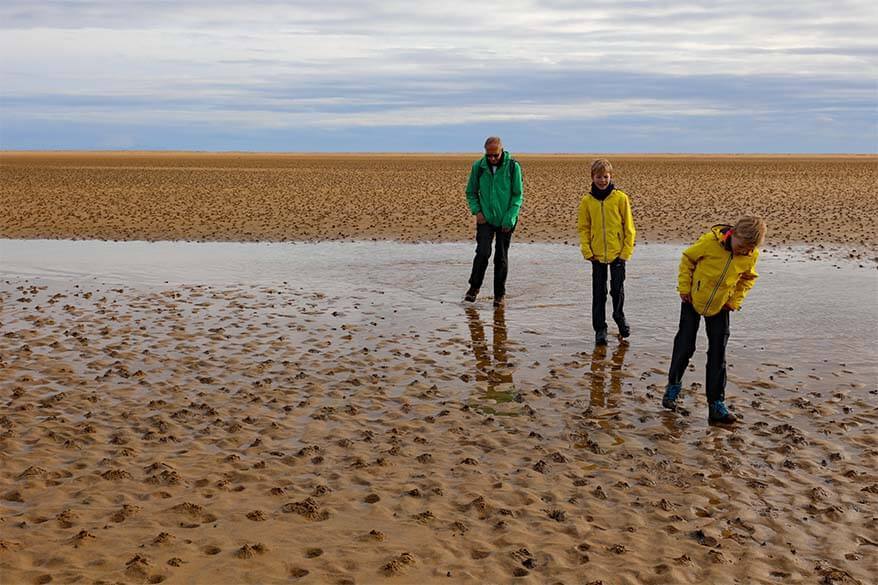
8. Drive Carefully
Iceland has right-hand traffic (same as in mainland Europe or in the USA), and driving is generally relaxing outside Reykjavík due to minimal traffic. However, most main roads, including much of the Ring Road, are single-lane in each direction with no shoulders.
Drive carefully, stay alert for sheep and unpredictable tourists, and never stop on the roadside where passing is difficult. Watch for single-lane bridges and tunnels – priority signs are posted, but you need to spot them in time.
Iceland is definitely not the place to learn to drive or take safety lightly! We often see people stopping to take pictures in the middle of the road to take photos or parking on the roadside to pet horses. On one of our recent trips, we even saw three drivers in one day (yes, 3 in a single day!) driving on the wrong side of the road! If you don’t even know which side of the road to drive on in Iceland, renting a car is not a good idea.
Good to know: Summer is the easiest time to explore the Ring Road by car. Winter driving is a whole different challenge: icy roads, blowing snow, limited visibility, and darkness. Even experienced drivers should exercise extreme caution, and if you have no winter driving experience, stick to organized tours – it’s simply safer.
LEARN MORE: Driving in Iceland in Winter
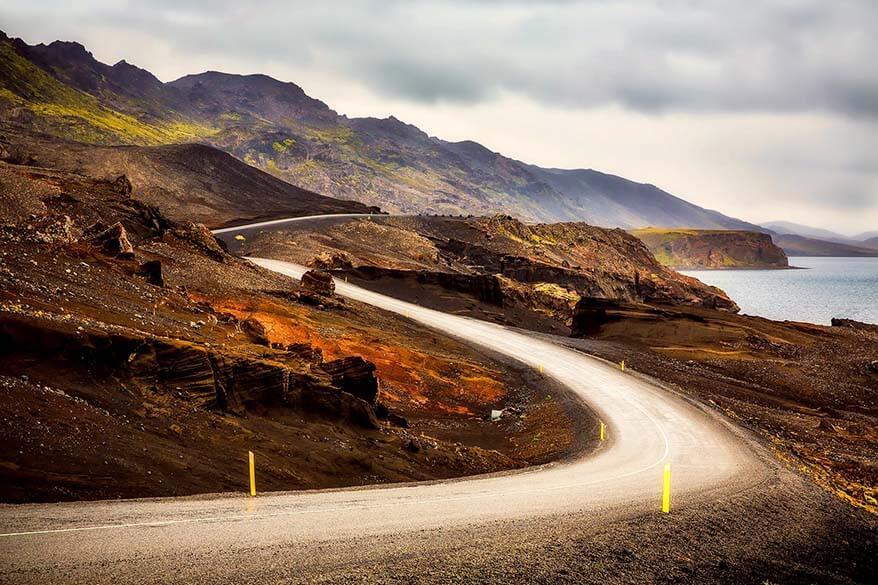
9. Keep an Eye on Weather Alerts and Road Closures
Always check for weather alerts and road closures when traveling in Iceland. While it’s always a good idea to keep an eye on the weather forecast and any safety warnings, it’s essential when visiting Iceland outside of the summer season.
In winter, many secondary roads are closed, and even sections of major routes like the Ring Road can temporarily close due to snow or other hazardous conditions. This doesn’t happen often in the south, but when it does, it’s for your safety, and you may need to adjust your travel plans. For this reason, we recommend spending your first and last nights near Reykjavik or the airport during the winter season.
TIP: Bookmark safetravel.is and road.is websites or download their apps, and check them daily before heading out.
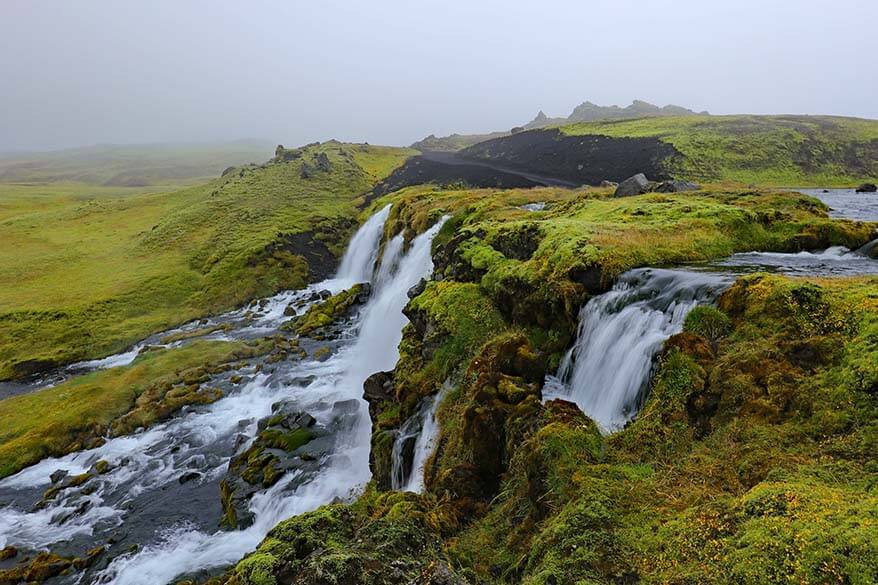
10. Know When You Need a 4WD and What F-Roads Are
You don’t always need a 4WD or 4×4 in Iceland. The Ring Road is paved, and most attractions along it are easily accessible with a regular 2WD car.
However, a 4WD is strongly recommended if you’re traveling in winter (October to April/May) or if you plan to go off the beaten path in summer – places like the lighthouses of Snæfellsnes, the cliffs of Reykjanes, or the Westfjords are easier and safer to reach with a 4WD. Even if you don’t plan to drive on F-roads, having a 4WD makes your trip far less stressful and more enjoyable.
So, what are F-roads? These are secondary gravel roads in Iceland, ranging from simple gravel tracks to rough, bumpy routes, and some even involve river crossings. Driving on F-roads always requires a 4WD, and in some cases, a 4×4 super jeep. Most F-roads are only open from mid-June to late September (weather dependent).
If you plan to tackle any F-roads, research carefully which roads are suitable for a regular 4WD or small 4×4, and which require a super jeep. Make sure your rental car allows F-road use, and remember that even the most complete insurance does not cover river crossings.
LEARN MORE: Bucket-list trip in the Highlands of Iceland with a Private Driver
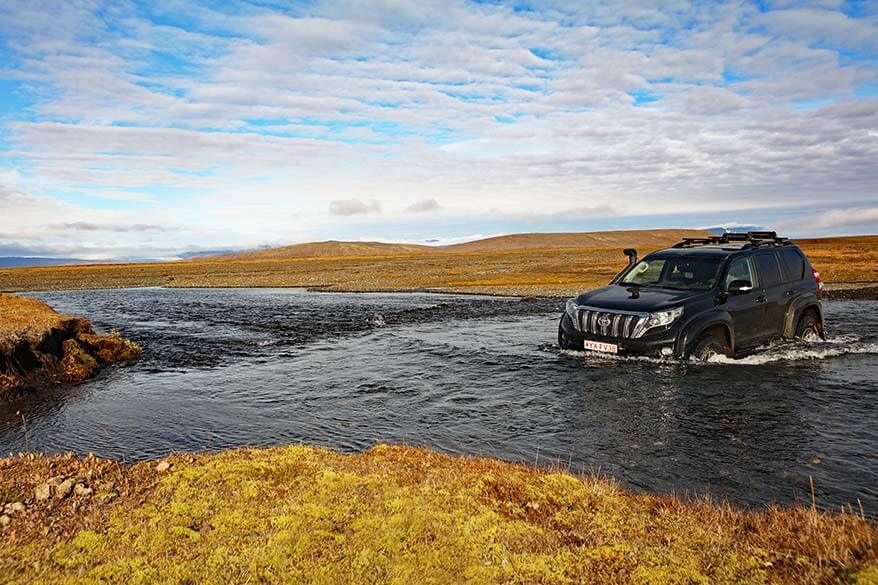
11. Get Full Insurance for Your Car
One of the most common questions we get is: “Do I really need full insurance for my rental car in Iceland?” The answer is yes!
While most trips go smoothly, the chances of needing insurance are higher in Iceland than you might think, and repair costs can be huge. Flying rocks, doors ripped off by strong winds, or other accidents happen, often beyond your control. Without full coverage, these incidents can become very expensive.
Our experience: On our first trip (late May–early June), a snowstorm and icy roads caused our car to slide off the road. Thankfully, there was no damage, but full insurance meant we didn’t have to worry about anything other than getting the car back on the road. On our most recent trip in the Westfjords, we got a flat tire beyond repair. Luckily, insurance covered the replacement, as it was almost 800 euros.
TIP: We recommend booking a car through Booking’s car hire website to compare providers and find the best deals. They also offer full insurance at very competitive rates – much lower than what you’d pay at the counter. We’ve used this site for all our trips over the years, usually 8-10 rentals a year, and our experience has always been reliable and hassle-free.
READ ALSO: Why You Need Travel Insurance
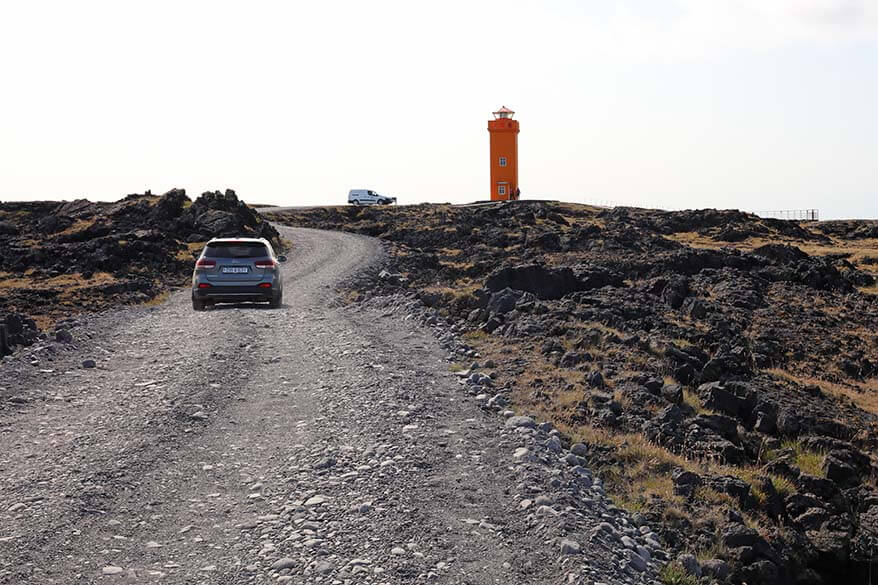
12. Take a Road Trip
Now that I told you that driving in Iceland isn’t always advisable, I have to add that by far the best way to explore Iceland is by car. Public transport is limited, and if you want to see the best of the country, planning a road trip is the way to go!
In summer, you can rent a car and easily explore on your own. In winter, consider multi-day organized trips, or – if you are very confident in winter driving – make a road trip in the south of the country (see our recommended winter itinerary). Alternatively, stay in Reykjavik and take guided day tours.
Wonder wear to go? Iceland has a lot to offer – more than you can see in a few days or even a few weeks. So it’s important to research in advance and make a realistic itinerary. Must-see places include Reykjavík, the Golden Circle, the Blue Lagoon, South Coast waterfalls and black sand beaches, and Jökulsárlón Glacier Lagoon. If you have time, venture beyond the popular spots – there’s so much more to discover.
Here are some recommended itineraries:
- 4 Days – see the ‘musts’ along the South Coast.
- 7 Days – covers the best spots in the south and the west, plus takes you a bit off the beaten path.
- 10-day Iceland Ring Road Itinerary – see the top places around the island.
- 10 Days in the West, North & the Highlands – get off the beaten path.
- More ideas: Iceland Itinerary Suggestions.
LEARN MORE: Best Places to See in Iceland & Best Things to Do on Iceland’s South Coast
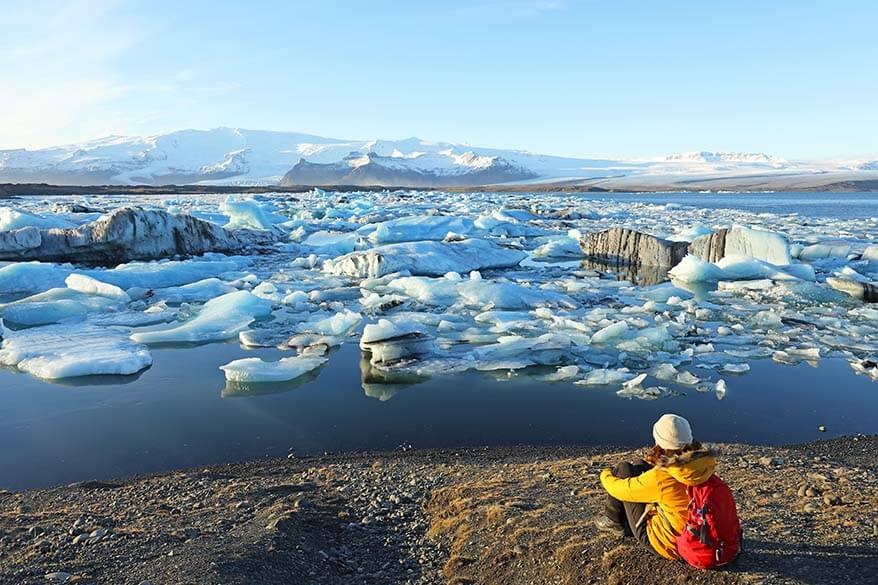
13. Don’t Miss Local Pools and Hot Springs
While famous geothermal spots like the Blue Lagoon, Sky Lagoon, and Myvatn Nature Baths get all the attention, Iceland is also a country of local swimming pools. Every town, and many smaller villages, has a pool, and they’re often top-notch facilities.
Many local pools have indoor and outdoor sections and feature multiple hot tubs, saunas, steam baths, and sometimes even baby pools, water toys, or slides for kids. They cost just a fraction of the popular tourist spots and are far less crowded.
Iceland is also dotted with natural hot springs where swimming is allowed. When planning your trip, look for local pools or hot springs – they’re the perfect way to relax after a day of sightseeing. Every day!
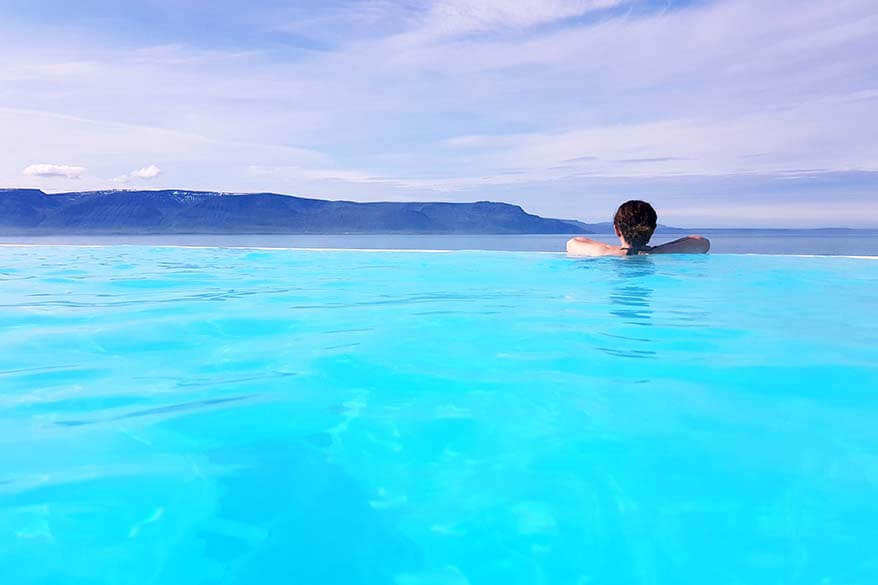
14. Get Off the Beaten Path
Iceland has become a very popular destination, and some places can get crowded year-round. Reykjavík, the Blue Lagoon, and South Coast attractions are popular year-round. Also Snaefellsnes Peninsula in the west and the Mývatn area in the north get really busy in summer.
The good news is that many stunning locations remain relatively untouched, where you can enjoy Icelandic nature and local life without the crowds. The highlands are one example, though most areas there are harder to reach. Still, there are plenty of easily accessible, less-visited spots worth exploring.
Here are a few of our favorites:
- Reykjanes Peninsula
- Westman Islands
- Siglufjordur
- Trollaskagi Peninsula
- Raudasandur Beach
- Dynjandi Waterfall
- Haifoss Waterfall
- Hvitserkur
TIP: Want to get completely off the beaten path? Check out this amazing trip I did a few years ago: Icelandic Highlands with a Private Driver.
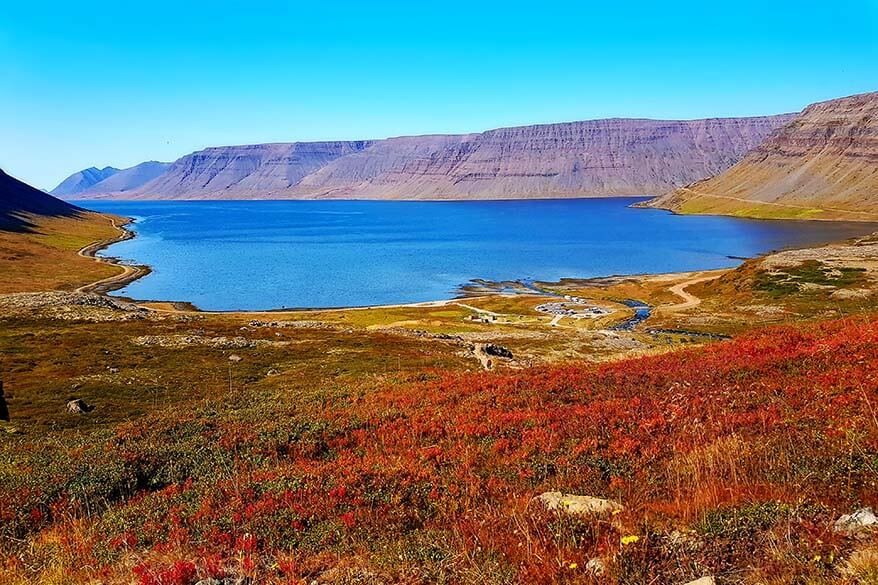
15. Prepare for Endless Days in Summer and Short Days in Winter
Daylight hours in Iceland vary dramatically depending on the season:
- Summer (May–June): The sun barely sets, giving you nearly 24 hours of daylight.
- Shoulder seasons (April, September): Expect around 14 hours of daylight – enough to fit in plenty of sightseeing.
- Winter (December): Southern Iceland gets only about 4 hours of daylight, while the north sees 3–4 hours. Planning your winter trip carefully is essential if you want to see the sights.
Good to know: Iceland is on GMT, so it’s 1 hour behind the UK, 2 hours behind much of Western Europe, and 4 hours ahead of New York.
READ ALSO: Travel Tips for Iceland in Winter
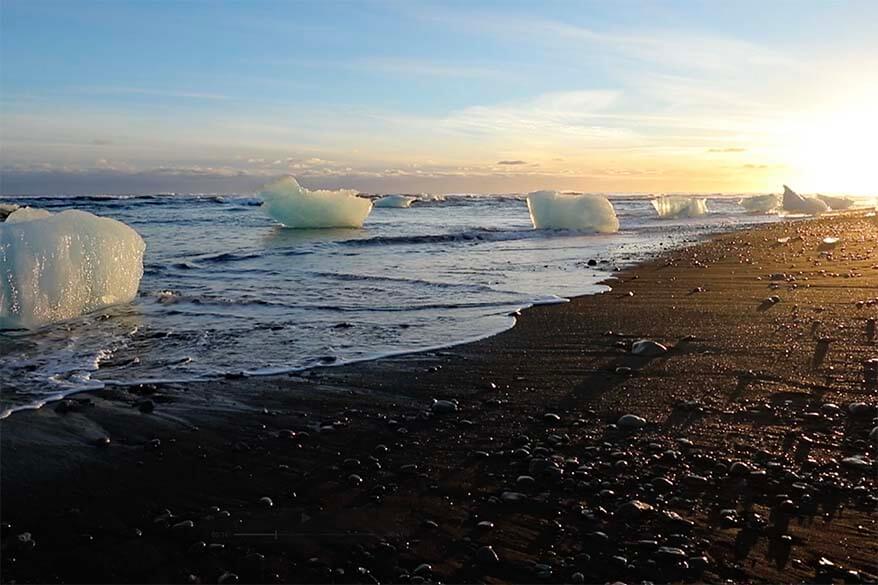
16. Don’t Forget These Travel Essentials
A few practical items can make a big difference when traveling in Iceland. Here are some things you really don’t want to forget:
- Travel adapters: Iceland uses 220-volt electricity and European Type C plugs. A simple travel adapter is enough for most devices. Heavy appliances usually aren’t needed – most hotels provide hair dryers.
- Sleeping masks (summer): In summer, the sun barely sets, and most hotels don’t have blackout curtains. A good sleeping mask ensures you get proper rest. After lots of trial and error, we recommend these comfortable masks that stay in place all night.
- Swimsuit, flip-flops, and quick-drying towel: For visiting local pools and hot springs year-round, these are essential.
- Thermos (winter): Bring a thermos for hot drinks while exploring in cold weather. Don’t forget to fill it up at your hotel in the morning ;).
- Crampons or ice cleats (winter): Pavements and walking paths can be icy, especially near waterfalls. Lightweight, easy-to-use ice cleats help you stay safe without taking up much space in your bag.
LEARN MORE: Iceland Packing List for Summer & Iceland Packing List for Winter
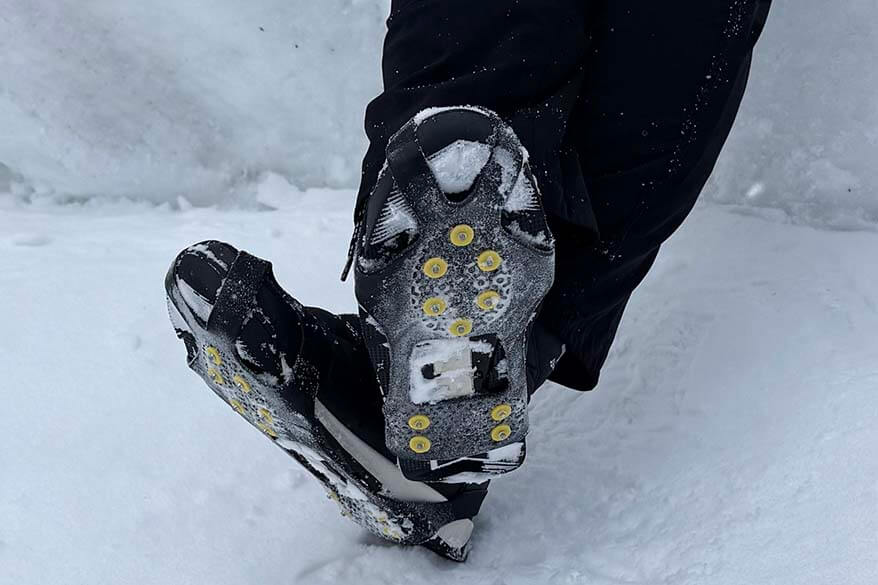
17. Set Aurora Expectations Right
Many people visit Iceland hoping to catch a glimpse of the Northern Lights – and for good reason. Iceland is one of the best places in the world to see them. That said, there are a few important things to know if you want to improve your chances.
The aurora season runs from September through March, sometimes into mid-April. If you visit in the summer, endless daylight makes it impossible to see them. But even during the dark season, spotting the Northern Lights is never guaranteed. Weather, cloud cover, and solar activity all play a role, so it always involves a bit of luck.
Set your expectations: don’t plan a trip solely for the Northern Lights. Fill your days with other activities so your trip is amazing no matter what, and check for the auroras each night when you can.
TIP: We’ve put together a complete guide that answers all common questions and shares our top tips for aurora hunting in Iceland. You can find all the details in the link below.
LEARN MORE: Northern Lights Guide for Iceland
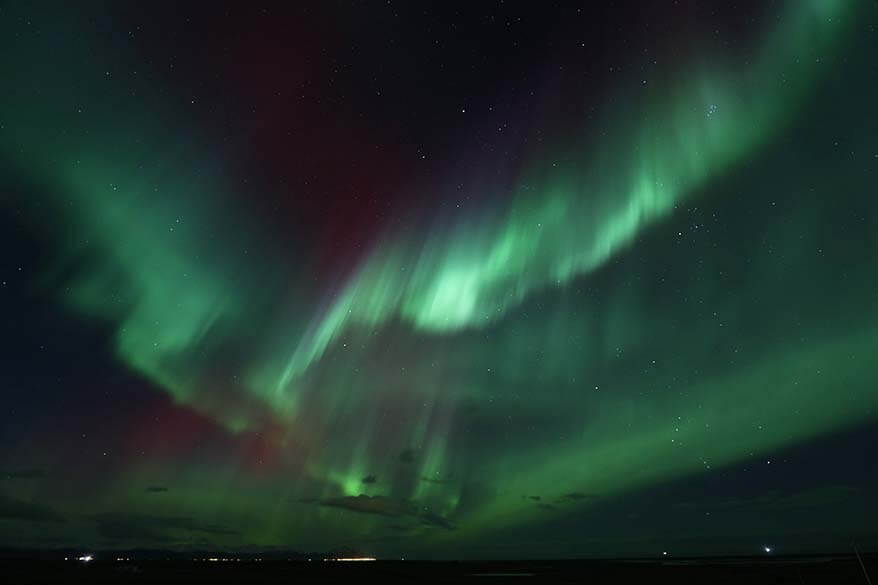
18. Learn a Few Words of Icelandic
If you speak English, you won’t have any problems in Iceland – almost everyone speaks it fluently. Still, learning a few Icelandic words can be useful, especially for understanding place names.
Remember the famously tricky volcano Eyjafjallajökull? Asking locals how to pronounce it is a fun way to impress friends back home. Many long Icelandic place names are actually combinations of shorter words. For example:
- Eyjafjallajökull = “glacier of an island mountain” (eyja = island, fjalla = mountain, jökull = glacier)
- Reykjavík = “bay of smokes” (reykja = smoke, vík = bay)
Some of the most common words in place names include:
- foss = waterfall
- vík = bay
- fjörður = fjord
- dalur = valley
- vegur = road
- gata = street
- gljúfur = canyon
- jökull = glacier
- fjall = mountain
- fjöll = mountains
- kirkja = church
Knowing these can make it much easier to read maps and understand Icelandic signs.
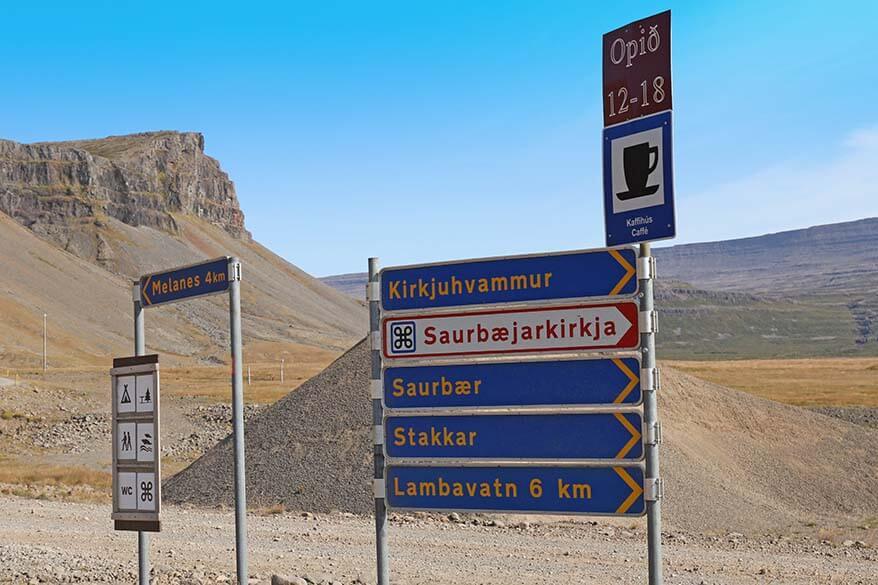
19. Stay Safe
Iceland is one of the safest countries in the world, with a very low crime rate. If there is one place where you don’t have to worry about safety, it has to be Iceland.
That said, there have been occasional pickpocket incidents at popular tourist spots, so it’s wise to stay alert with your belongings.
The biggest risks for tourists are driving, unpredictable weather, and reckless behavior in nature. Always check safety alerts, obey signs at cliffs, waterfalls, and beaches, and drive responsibly.
Keep a safe distance from the water at Reynisfjara Beach in Vik, don’t go on glaciers without a guide and proper equipment, and if you visit a recently active volcano, never walk on lava. Even if it looks solid, the crust can be thin, and volcanic activity may still be happening beneath the surface.
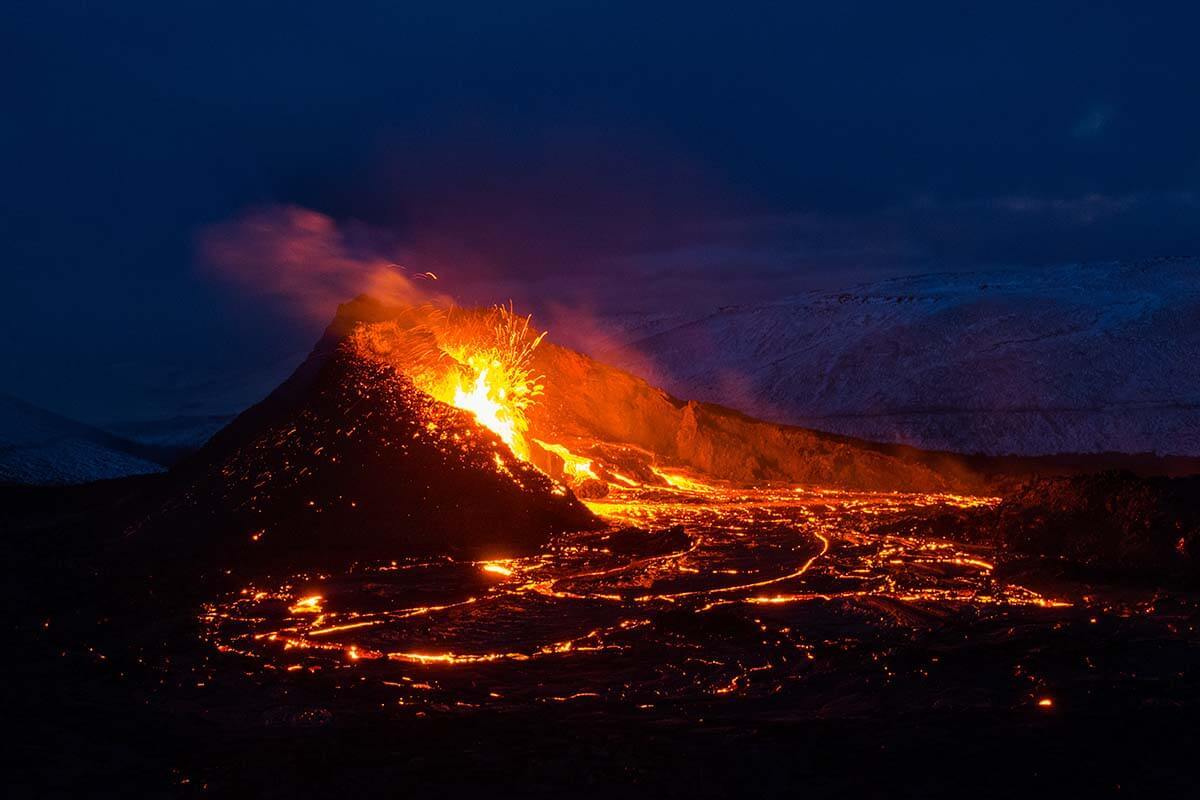
These are some of our essential travel tips for Iceland. Below, you’ll also find answers to frequently asked questions that are especially useful for first-time visitors.
If you have any other practical questions about visiting Iceland that aren’t covered here, feel free to leave a comment below – I’ll do my best to help!
Iceland Travel FAQs
You need at least 4 days in order to see the main landmarks along the south coast in Iceland, including Reykjavik. You need at least 10 days to explore all the main places along the Ring Road in Iceland.
Iceland has something special and unique to offer in every season. However, for lower crowds, pleasant weather, good driving conditions, and a chance to see the Northern Lights, we recommend going in September.
No, you cannot see all the best places in Iceland just by staying in Reykjavik. There are many nice tours from Reykjavik, including Golden Circle, South Coast, and Snaefellsnes Peninsula. But for everything further than that, you’ll need to rent a car or join a multi-day tour.
The best way to see Iceland is to rent a car and make a road trip. Icelanders drive on the right and traffic outside Reykjavik and the most popular south coast attractions, is usually very quiet. That being said, driving in Iceland in winter can be dangerous and requires good preparation and flexibility.
Yes, the majority of Icelanders speak English and you will not have any problems communicating with the locals. English is taught as a second language and most Icelanders speak it fluently.
No, tipping is not expected in Iceland. So you don’t have to tip at restaurants or hotels. However, many foreigners like to tip their tour guides and it’s always appreciated.
Yes, you can use a credit card for pretty much everything in Iceland. On all our recent trips we never had any cash and we didn’t miss it at all. Even the smallest purchases can be paid by credit card. However, make sure that you have a credit card with a 4-digit pin.
More tips for your trip to Iceland:
- When to travel: Iceland – summer vs winter
- What to see: Best Places to Visit in Iceland
- Reykjavik: Best Things to Do in Reykjavik & One Day in Reykjavik
- Airport transfers: How to Get to Reykjavik from Keflavik Airport
- Budget: How Expensive is Iceland (& How to Save Money)
- Packing: What to Wear in Iceland in Winter and What to Pack for Iceland in Summer
- Tours: Best Tours and Day Trips in Iceland and Best Half Day Tours from Reykjavik
- Itinerary Suggestions: Iceland Itinerary Suggestions for 1 to 14 Days
- South Coast: 4 Days in Iceland – Best Itinerary
- South & West itinerary: 7 Days in Iceland
- Complete Ring Road: Iceland Ring Road Trip Itinerary
- More info: Check our Iceland travel guide for even more inspiration and tips
TIP: Did you find this guide helpful? Bookmark this post for later, share it with your friends, and save it to Pinterest to inspire your next trip.
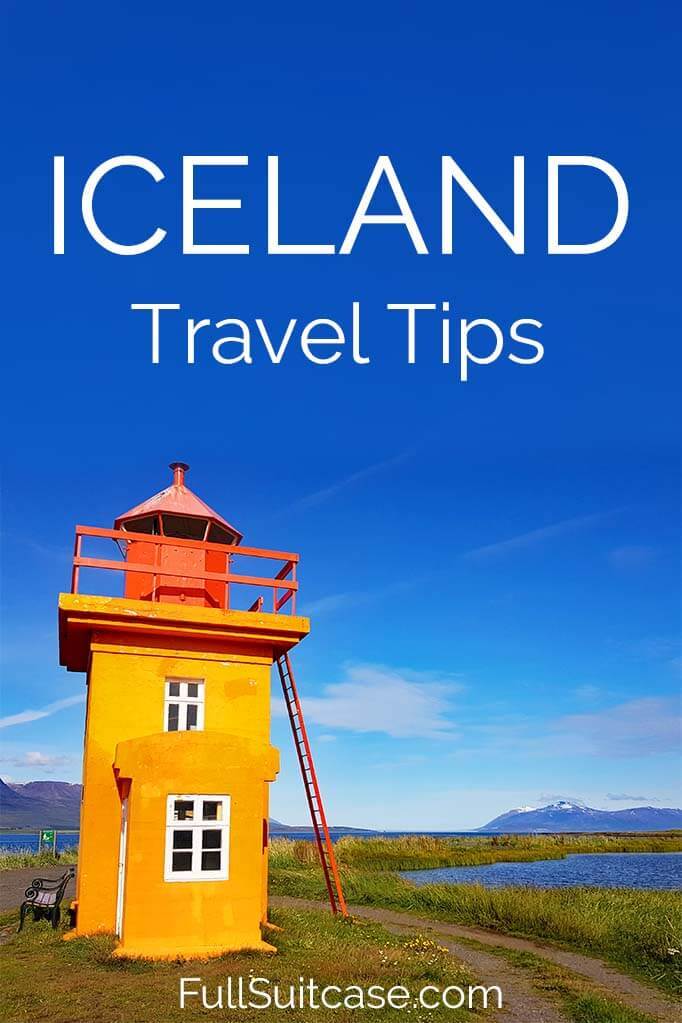
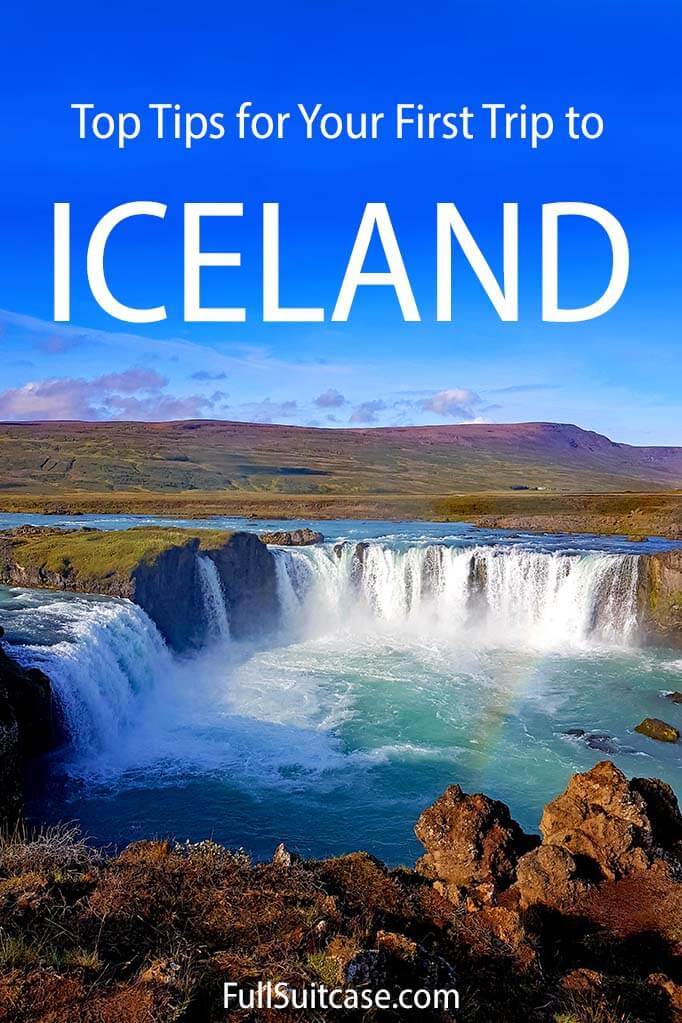



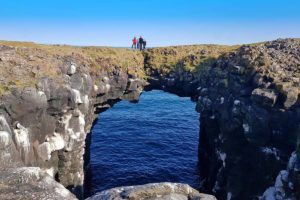
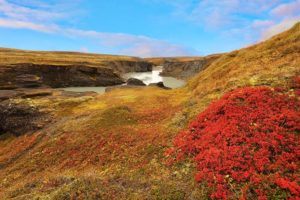
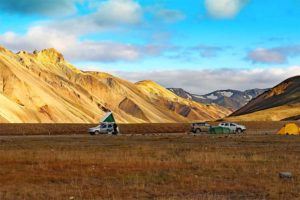
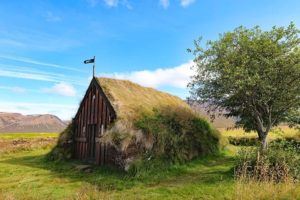

? Traveling to Iceland (three cities) and ending in Reykjavik via Holland America on July 10. Looking for someone to pick us (myself and husband) up at cruise port at 8am, take us to Blue Lagoon for two-three hour visit and then give us ride with tourist information to airport. Time 8am-2pm. Possible?
Hi Pam, with the right budget, everything is possible. If you want to have the same driver for all this, your best bet is to contact some of the local companies that offer private transfers and ask for a quote (search online). I would try at least two and compare the prices. Taking into account that a one-way private transfer between the cruise port and Keflavik airport at the moment costs about $200 (see here), you are probably looking at a cost of at least $400 for something like this. Plus, you have to reserve the Blue Lagoon tickets.
Hi,
We want to visit the following sites on our 4 night Iceland trip in late October. We weren’t sure of the order in which to do this. We will be staying the first 3 nights in Hella at the Hotel Ranga. We are not sure where to stay our last night. We flights arrive early morning and leave late afternoon.
Golden Circle with the 3 major sites, Lava show and/or Perla Museum, Raufarhoshellir Lava Tubes, Sky Lagoon, Solheimajokull Glacier Hike, Reynisfjara Black Beach, Seljalandfoss Waterfall, Gljufrafoss Waterfall, Kerid Crater, Efstidular Farm, Langjokull Ice Cave and Monster Truck Tour.
Looking forward to your advise!
Cynthia
Hi Cynthia, as much as I would like to help each and every reader, preparing a detailed itinerary tailored especially for your trip, time of the year, and interests takes way too much time and it’s not something I can help with.
The best you can do is group the places per day, so e.g. visit the Golden Circle one day, the South Coast another day/two days, and the places in/near Reykjavik on the first or the last day of your trip. If you are planning to do tours like Langjokull Glacier, then it’s best to start with that and see what’s available, on which dates/ hours, and then build the rest of your itinerary around it.
Please take a look at our 4-day itinerary and 7-day winter itinerary for some ideas of how you could plan your time on some of those days. Keep in mind that it gets dark around 5.30-6 pm at the end of October.
Hi, I’m planning to visit Iceland with my 2 kids (13 and 15, so 3 persons total) during July but am afraid there will be way more tourists (such as myself 🙂 than I am expecting. Is this a valid concern? Thanks for your time, cheerio!
Hi George, it’s only a concern in some very popular areas (e.g. the main stops on the Golden Circle or the main waterfalls on the South Coast). Depending on which places or at which time of the day you visit, it might be completely deserted or very busy. But if you get just a bit off the main tourist route or visit the most popular sites early in the morning or later in the day, the crowds are not something I would worry about.
The main worry is that you may have trouble finding accommodations in the more rural areas along the Ring Road because there are very few options. Even fewer choices for more than 2 people in the room, although 3 is much easier than 4. So if you want to travel in July this year, book ASAP (also your rental car).
Thank you for all the various itineraries and tips! Been looking at planning iceland and was getting confused a lot before this. However I have one big question that probably gets asked a lot:
when is the best season to visit, summer or winter?
I cannot decide between February and June. The daylight hours in February are quite acceptable (6pm sunset), however not too keen on cold weather. The deciding factor for me would be, should I see the scenery/landscape in summer or in winter?
Hi Jay, there is not one ‘best’ season to visit Iceland. It really depends on your interests. We actually have an article about this – see here: what to expect in Iceland in summer vs winter.
That being said, based on what you wrote above, I think that summer is the best way to go for you. June is a wonderful time in Iceland, with lupine blossoms, little lambs, endless days, and pretty decent weather. The scenery is nice – I’m sure you’ll love it. Just one thing – if you are thinking of going this year and want to make a road trip – book your hotels and rent a car asap.
Take a look at our Iceland itinerary suggestions for some ideas on how to plan your trip.
We are planning to go for 7 nights in February. We would prefer to do bus tours rather than drive. What advice to you have? Thank you for this great opportunity to gather such helpful information.
Hi Jennifer, with 7 days and not opting for a self-drive trip, you can either opt for a multi-day Ring Road tour (e.g. like this if the dates suit you), stay in Reykjavik and make day trips, or – probably the best option – a combination of the two (e.g. a 3-day tour of South Coast + some time in Reykjavik and a few day tours to some other places that are not covered by the 3-day tour). Here you can find the best day tour suggestions for a winter trip.
Have a great trip!
Thanks so much for the detailed travel tips!
We will visit for 7 days in June. I have heard about places to rent cold weather gear, which is appealing for our family of still-growing kids and coming from a warm climate. Any advice about this?
Hi Jason, I don’t have any first-hand experience with clothes rental. However, please keep in mind a few things. First, June isn’t winter. You don’t really need any special cold-weather clothing. A couple of sweaters and a good waterproof jacket is all you need in the summer. Second, you will step out off the plane and you will be nowhere near the city, so it’s better to arrive dressed for the weather and not in your shorts and t-shirts anyway. And finally, you can buy a decent rain jacket online for less than what it will probably cost you to rent one in Iceland.
Please take a look at our summer packing list for Iceland for more information on what you really need.
Have a great trip!
any insights on where its best to buy wool sweaters etc as well as other Icelandic artisan, craft pieces along your 10 day itinerary which we are planning to follow pretty exactly
Hi Tony, the best place for Icelandic sweaters is the shop of the Handknitting Associaton of Iceland in Reykjavik city center (see map). For the rest, it really depends, you will find souvenirs everywhere, but they will not always be made in Iceland. Reykjavik will have the most options. So just look around and if you find something you like, get it because you will not find many shops in the countryside.
Have a great trip!
Great information and so many useful suggestions – cant wait to see the beautiful landscapes – I love Scandinavia (Alaska and N Canada too) But this will be my first trip to Iceland, in June. I plan to spend about 12 or 13 nights – I would rather drive a little more than keep changing hotels, so am trying to pick 3 bases for 4 nights each, but having a little difficulty … prefer less touristy … but really not sure how to narrow it down as everywhere looks wonderful. I have read many articles etc but so much to choose from – do you have any suggestions? Not worried about the main 2 cities, unless I should be. Regardless, thanks for sharing such a great site.
Hi Trudy, someone else just asked the same thing under this article (you can find my reply in the comments there too). Basically, because of the fact that most attractions are located next to the Ring Road and because most of the interior is inaccessible by regular cars), the best way to explore Iceland is by moving along the Ring Road. Yes, you can just pick a few base locations, but that will mean a lot of backtracking – especially if you want to see different areas all over the country. So for that, I recommend that you take a look at our Ring Road itinerary and potentially add a few nights at a few areas in order to travel slower.
Alternatively, if you prefer slower travel, stay in the south/southwest of the country – there, you could base yourself in a few areas and find plenty to see and do nearby. For that, Reykjavik is ok for a few days and/or the Golden Circle. Along the south coast, Vik is probably the most central for everything, and in the west, you can easily fill a few days around Snaefellsnes Peninsula/ Borgarnes area.
Hope this helps. Good luck with the planning!
What an amazing website! I thought I had done some pretty good research for my upcoming trip, but this website does it all!
Thank you for your kind feedback, Stan.
We have a lot more guides and itineraries to help you plan your trip to Iceland – check it out too!
Hi, I’m planning to go to Iceland for 5 days in December staying over New year’s Eve!
A couple of concerns I have is I’m trying to look at excursions with a tour guide because I can’t drive. Most of the tours to visit natural landmarks are about 8 hours long but at said there’s only a few hours of daylight in December. I just wanted to know how to see the black sand beach and glaciers ect when in darkness most of the day. Also if you know any companies that are legitimate and not going to rip me off when booking day excursions that would be very helpful.
Hi Amber, indeed, there’s just very little ‘daylight’ in Iceland in December. About 3-4 hours at the end of the year.
Going on an organized tour has several advantages. First, you don’t have to drive, and second, they know how to time their tours in order to maximize the little light that there is. So all tours will start and end in the dark at that time of the year, and they do their best to be at the nicest places when there’s enough light to enjoy them. It’s a special experience traveling to the Nordic countries at that time of the year, but many people love it despite the lack of light…
As for tour companies, we always book all our tours via the GetYourGuide website – that way, you know that the tour providers have already been screened and pre-selected, you can read real customer reviews (only people who actually did the tour can post a review), compare prices, and they also have great customer service and a very flexible cancelation policy. Here you can find our hand-picked selection of the best Iceland winter tours from Reykjavik.
Hope this helps.
I’m from Malaysia. I’m interested in the Zodiac tour. I plan to visit Iceland 6th June 2020 to 13th June 2020. I can’t book a ticket now as I can’t exactly confirm which day I will be there. Can I have a ticket with flexible date of visit?
Hello, we are just a travel blog and we don’t book tours. If you want to book a zodiac tour on Jokulsarlon glacier lagoon, you can do it yourself in advance or – if available – once you get there.
I don’t think that you can book a flexible ticket, however. It’s best that you figure out your trip itinerary and then book your tours based on that. You can find some suggestions for Iceland’s South Coast itinerary here, if that helps.
Have a great trip!
Thank you very much for the links and info! I really appreciate it.
I wanna go to Iceland after reading this 🙂
HI Jurga, I am planning an Iceland trip in August. We want to drive down to the Glacier Lagoon and take a boat tour. Do you have any boat tours or companies to recommend? We are interested in the RIF or zodiac type tour. Do you have any advice about types of boats? I assume it’s good to have a reservation. Thank you very much.
Bless, bless. Carmen
Hi Carmen, you should indeed try to book in advance. Here’s the website of the place that runs the boat tours on Jokulsarlon. I don’t think there are more options there – it used to be all the same company as far as I know.
We did an amphibian boat tour there years ago and it was quite special. Nowadays we really love zodiac boat tours as well, but we haven’t done one at Jokulsarlon, so I can’t compare. From what I see, zodiac is a lot more expensive than the amphibian boat, so it’s really up to you. Keep in mind that sometimes zodiac tours get cancelled due to high winds and (if I understand it correctly) it’s a bit less the case for the amphibian boats.
Even if you don’t do a boat tour and just walk around the lagoon, you’ll love it.
Nearby you can also find another glacier lagoon – Fjallsarlon. There you can also do (cheaper) zodiac tours (you can book them directly with the company that runs them), so maybe it’s worth looking into that?